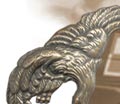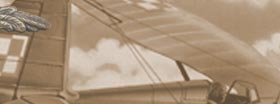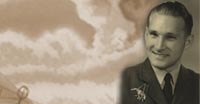   |
|||
|
|
B-Dienst (Germany's naval intelligence service) had cracked the Royal Navy's cipher in 1935. British Intelligence had little success in de-ciphering German radio traffic and remained largely 'blind' right up to the outbreak of war, hence the surprise when a German U-boat sank Royal Oak at Scapa Flow in the Orkney Islands. In the early 1920s, the Biuro Szyfrow (Polish Intelligence) had successfully monitored German radio traffic. Between February 1926 and July 1928 German naval followed by army radio traffic abruptly became unreadable. The Poles suspected new codes and ciphers generated by machines were now being used (Budiansky, 2000) after initially suspecting it was dummy traffic. An early Enigma machine had been displayed at the 1923 Congress of the International Postal Union in Berne, Switzerland for businessmen eager at keeping the contents of their telegrams secret. In 1928 the Poles were given direct confirmation in the existence of the Enigma machine with military capabilities. Polish Customs at Warsaw inspected a package mis-directed to Poland that prompted an immediate diplomatic protest from Germany that the package should be returned immediately and un-opened. With their suspicions aroused, Polish Intelligence technicians checked out the contents and found a commercial version of the Enigma machine. Quite calmly and with a dash of audacity, Biuro Szyfrow ordered an Enigma machine from the manufacturers in Germany by using a false cover and address. Initially Biuro Szyfrow had great difficulty in breaking captured radio traffic and in January 1929 approached the renowned mathematics institute of the University of Poznan (Budiansky, 2000). Secret classes in cryptology ran in parallel to undergraduate studies. Eventually, two students Jerzy Rozycki and Henryk Zygalski worked in a vault in the Army's regional command post in the outskirts of Poznan - a building built by Kaiser Wilhelm II as the official residence for the Crown Prince. A little later, Marian Rejewski joined the group. From 1933 onwards Biuro Szyfrow had been reading German Enigma traffic. As war loomed, Poland in their desperation used the Enigma card to guarantee French and British support. The 'ace' was that the Poles had replicated the machines and broken the code. Days before war broke out and through clandestine meetings, (Menzies who was head of MI6 was present at the meeting and this is described in Foot's 1984 book on the SOE) samples of the machines left Poland ahead of the advancing German Army to Britain and France. The mathematicians reward from British Intelligence - a scarf depicting a horse-racing scene (Budiansky, 2000: 96). British and French Intelligence together with diplomats and leading politicians were stunned by how late in the day the Poles had played their hand. Both the French and the British Governments posturing had been largely pledges of support rather than physical resourcing through arms and munitions being sent, hence the fiasco over the delivery of fighter aircraft from Britain. For further information on the Enigma and Ultra secrets see: www.pbs.org/wgbh/nova/decoding |
||